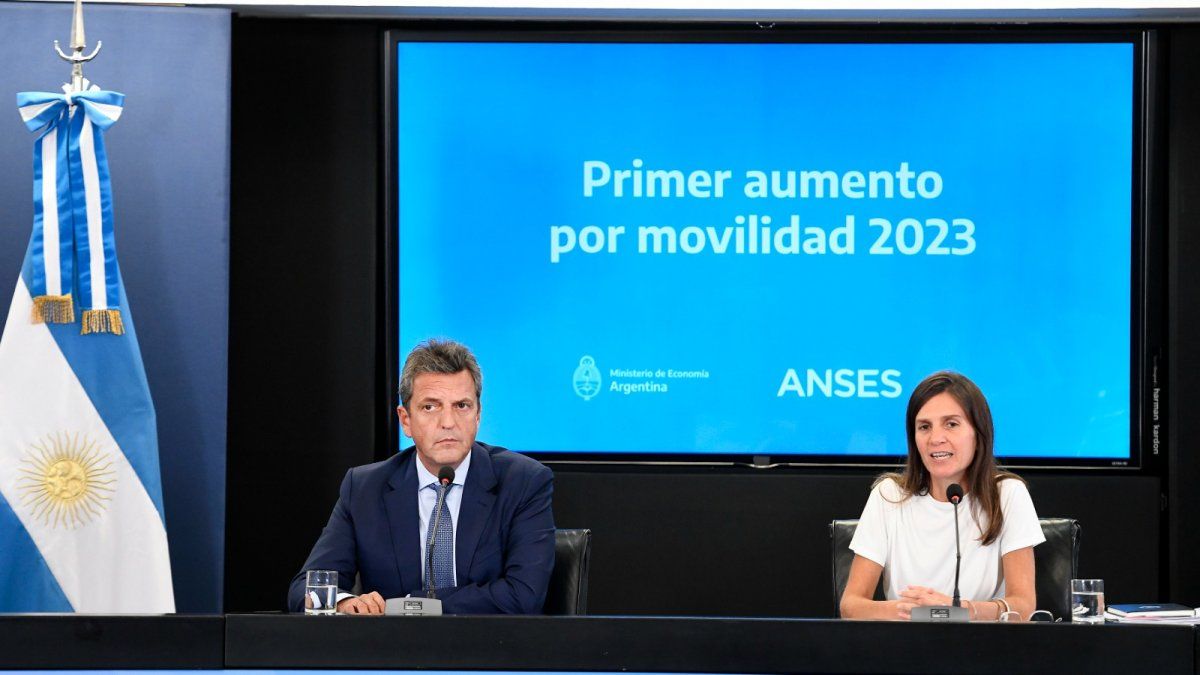The National Social Security Administration (Anses) launched the pension payment plan so that people who have not met the 30 years of contributions established by law can retire. The “fine print” was published after the International Monetary Fund (IMF) report, which called for “containing fiscal costs.” In dialogue with the media, the head of Anses, fernanda ravertaassured that these requests were not taken into account, but explained that the fiscal impact of the moratorium “will not be so important.”
Regarding the estimates, The Anses projects that for this year 50,000 people will retire per month, so they expect that for all of 2023 there will be some 400,000 people, with a fiscal expense that will be up to 0.2% of GDP. “In fiscal terms it is reasonable,” they assured the Anses economic team. However, Raverta estimated that there could have been more, and pointed to Together for Change: “We had a stopped Congress, where the opposition deputies did not give a quorum and we did not have a rule, so between January, February and March we could not retire”.
“If we have more installed capacity in our offices, we add contracts or we go out to do operations, there will be more people that we can retire,” added Raveta. The Anses estimates that there are 800,000 people who could access the plan of payments since they will already have retirement age. In addition, they have registered that there 900,000 people of working age that they could also begin to pay the contributions in installments, although they have not yet implemented this part of the law.
Raverta anticipated that It will be the “smallest moratorium in terms of coverage”, which explains why they do not expect a fiscal cost “as significant as other moratoriums.” From the Buenos Aires offices of Anses, the official explained that pension coverage is already 95%, so it is not like other moratoriums that Kirchnerism did in the past where there were massive retirements, because there were 80-year-olds without assets.
“The effect is almost neutral because the people who enter the payment plan would have had access to a retirement via the PUAM, that is why it is difficult to talk about fiscal cost, because there is already a policy that guarantees them 80% of the credit, although this retirement has better conditions”, explained Raverta. In addition, she added that in the first months the person does not receive 100% of the credit because he has to pay the debt to the State.
When asked why the staff reports of the IMF speaks of a fiscal cost of 0.4% of GDP for the medium term, he replied: “I don’t know how they estimate it, to make those calculations they should have the data on how many people turn 65 and in what month, and if they should 5 years of contributions or 30 years. The IMF does not have deep data”.
In the report of more than 100 pages published by the IMF After reviewing Argentina’s quarterly goals, he gave a series of payment plan recommendations. “Early and decisive action is required to lastingly address the significant unfunded fiscal costs of the unexpected pension moratorium, 0.4% of GDP in the medium term,” the IMF said. On this point, Raverta assured that all the requirements of the payment plan were raised a year ago, when the law was written. “We did not talk to the IMF about the payment plan”added the official.
Of the claims made by the IMF and that are part of the payment plan, there is: the existence of a “asset evaluation” to comply with certain equity, income and consumption parameters, and the waiver of the official exchange rate. “Since 2014, there have been socioeconomic parameters in the moratoriums. We had already defined the criteria before, it is in the law that was voted on in February, it was not modified based on anything, ”added Raverta.
The income established in the regulations has a cap of $404,000. “They do not seem particularly exclusive requirements, they are more in line with the typical non-wealth requests of the 2014 moratorium,” analyzed the economist. carlos martinezsocial security expert.
The IMF also asked for other requirements that were not taken into account, such as people without any contribution being left out. “There are no people without any contribution,” Raverta replied to the query. In addition, that there are higher interest rates for those who access payment plans with a greater number of installments. “The quotas are defined in relation to having, they cannot exceed 29% of the retirement, so that as the retirement increases quarterly, so does the contribution to the State. Interest is not charged to people, nor is the citizen’s debt liquefied,” explained the head of Anses.
In addition, Raverta was asked what the point of the IMF report that thanks Argentina for presenting the requested report on “the equity and sustainability of the pension system” means. On this subject, the head of Anses replied: “We did not do it, the Economy will have done it. What yes, does not come into account with any public policy ”.
Source: Ambito




